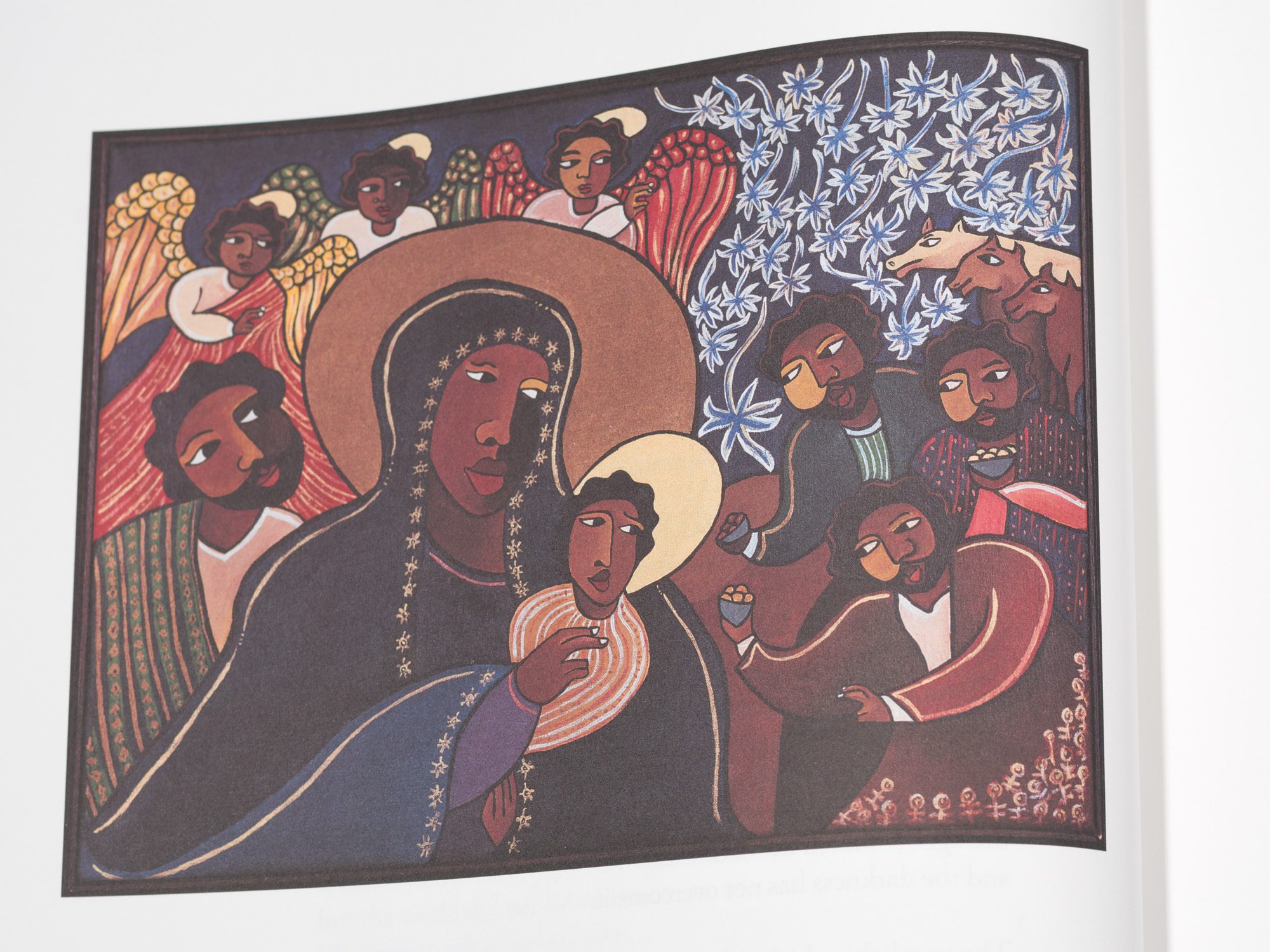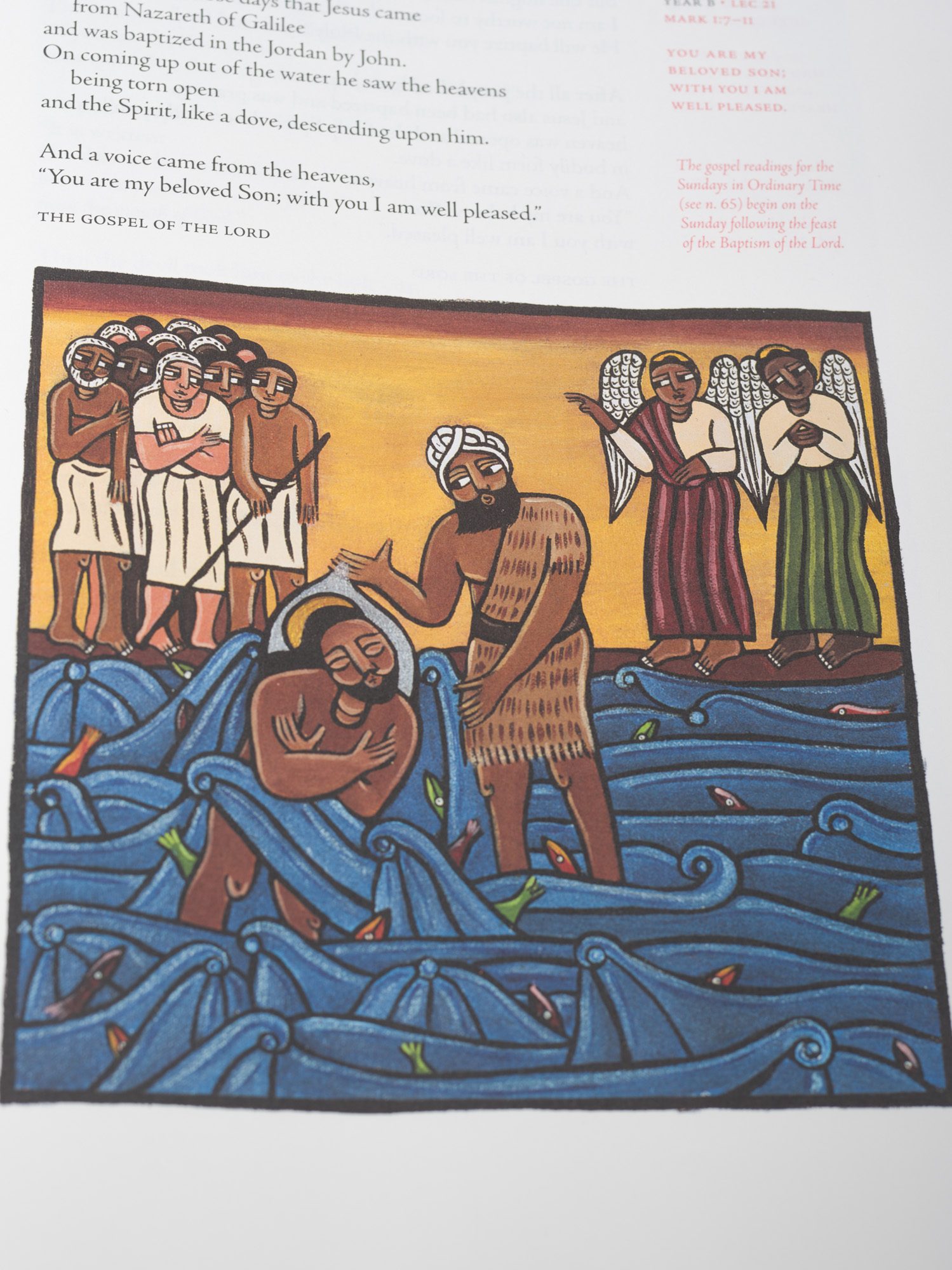This year, National Bible Week began Sunday, November 20, and ends on Saturday, November 26, 2022. To mark the occasion, CHM curator of religion and community history Rebekah Coffman highlights a remarkable illustrated publication in CHM’s collection.
National Bible Week originated in 1941 under US president Franklin D. Roosevelt, when founders of the National Bible Association read scripture over the radio to bring comfort to nationwide audiences in the midst of World War II. The week-long commemoration continues today by recognizing the historic importance of scriptural text and encouraging its reading as a source of hope.

Joseph, Mary, and Jesus visited by the Three Wise Men. The Book of the Gospels. Chicago: Liturgy Training Publications, 2001. Photograph by Timothy Paton Jr.
An important aspect of reading scripture is an emphasis on seeing yourself in the text through the stories being told. In addition to the actual words written, this connection can also happen through images used to depict different figures, scenes, and moments. Biblical illustration is a practice that has spanned thousands of years. In American visual tradition, this has often been done through a racialized lens that depicted biblical figures as white or of European origin to the exclusion of others. There is also an historic tradition of reclaiming Jesus and other saints as people of color with culturally specific connections and community-centered meanings. In Painting the Gospel: Black Public Art and Religion in Chicago, Dr. Kymberly Pinder describes this as an important reconciliation process for empowering, uplifting, and creating a sense of belonging for Black religious leaders and community members.

The front cover of The Book of the Gospels features an angel, representing Matthew, and a lion, representing Mark. Photograph by Timothy Paton Jr.
In recognition, we turn to this beautifully illustrated text published by Chicago-based Liturgy Training Publications. Released in 2001, The Book of the Gospels focuses on four books of the Christian New Testament: Matthew, Mark, Luke, and John. Each book, through a slightly different lens, tells stories from the life of Jesus of Nazareth. These also correspond to different rituals and celebrations throughout the Christian year. The Gospels’ cover is richly decorated with emblems symbolizing their four writers: Matthew as a human/angel, Mark as a lion, Luke as an ox, and John as an eagle. On the pages inside, important moments in the text are highlighted through a series of paintings by Bronx-based artist and curator Laura James.

The Baptism of Jesus by John the Baptist in The Book of the Gospels. Photograph by Timothy Paton Jr.
James’s paintings draw inspiration from the Ethiopian Christian tradition utilizing lush colors, strong lines, and rich pattern work to bring biblical scenes into focus. Important to this is the centering of Black and Brown figures as protagonists.

Jesus washing the feet of the disciples in The Book of the Gospels. Photograph by Timothy Paton Jr.
As described on her website, “James is pleased to help black people see themselves in their sacred texts, in African religions and Christianity, a place where racialized people have been excluded in the west.” In her larger practice, James’s work ranges from secular to sacred and includes religious imagery from many different faith traditions, including Christian, Yoruba, Buddhist, Islamic, ancient Egyptian, and Divine Feminine themes, all done in a similar stylized way. In The Book of the Gospels, her images demonstrate the Christian idea of imago Dei (the image of God) as something that is universal yet specific and, ultimately, embodied through multicultural human experience.